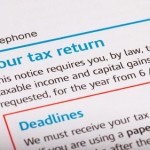 Tax relief is available on furnished and unfurnished properties, which is something all landlords need to be aware of if they want to save money on their tax bill. In a recent letter to the Chartered Institute of Taxation, HMRC has decided to clarify the issues of how tax relief is claimed on fixtures and fittings.
Tax relief is available on furnished and unfurnished properties, which is something all landlords need to be aware of if they want to save money on their tax bill. In a recent letter to the Chartered Institute of Taxation, HMRC has decided to clarify the issues of how tax relief is claimed on fixtures and fittings.
******Whoops! Looks like this is an old post that isn’t relevant any more :/ ******
******Visit the blog home page for the most up to date news. ******
The Wear & Tear Allowance lets landlords claim 10% of their net rent as tax relief (rental income less any legitimate expenses such as utilities that the tenant would normally be expected to pay) in their property business expenses. Landlords are allowed to claim this irrespective of whether they actually replaced any items or not.
Renewals Allowance
The Renewals Allowance is available to landlords who let furnished, part-furnished and unfurnished properties. It covers items that would normally be replaced at least once per year, including crockery, rugs and any other inexpensive item with a limited lifespan. Items classed as a revenue expense include carpets and other higher-value items.
White Goods
The Renewals Allowance does not cover white goods, as they are classed as capital items, and would include stand-alone appliances such as fridges, freezers, ovens and dishwashers. The replacement of integrated appliances should be claimed as a repair.
Tax can be a tricky subject and landlords have to be careful when filling in their tax returns if they want to avoid any unwelcome visits from HMRC. If you are not sure of what you can or cannot claim for on your self-assessment form, play it safe and consult with a tax expert.



